► We sit down with Lamborghini CEO
► Stephan Winkelmann on Lambo’s future
► Business plans, new models and leadership
CAR magazine recently sat down with Stephan Winkelmann, chairman and CEO of Automobili Lamborghini, to talk about the state of the business, what keeps him awake at night – and the new range of electrified models under development for launch later this decade as part of Lamborghini’s Direzione Cor Tauri strategy towards electrification. Read on for our exclusive interview.
We join you on the launch of the new 2025 Urus SE hybrid. How is Lamborghini doing in autumn 2024?
‘We are a three-model company and our order bank between the three lines is an average of one-and-a-half years, which is really healthy. The residual values are very strong, they are often higher than the new car prices. This is a very good situation. This means that the brand has an image which is hopefully going to last over the next few years and keep growing. And last year, for the first time, we delivered more than 10,000 cars globally – so we are trying to keep the balance right, not only in terms of order bank, but also in terms of distribution around the globe.
‘I don’t see big growth in the future. It’s not really about this. It’s more about getting more margin out of every single car, because we are in a small segment and it’s more about personalisation than just the sheer number of cars. And this is what creates for us the additional margin.’
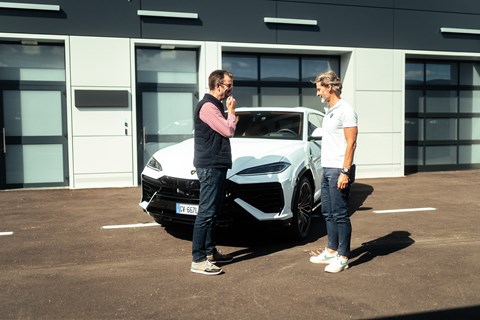
When you say personalisation, do you mean things like the paint, accessories and optional extras? You now offer more than 100 exterior paints and 47 interior colours on the Urus…
‘Yes. The bottleneck is on us, and not the customers. The complexity industrialising all the different colours, specs and materials is huge for a small company like ours. We are getting there, step by step, but this is where we see more and more opportunities for Lamborghini.’
When you launch the new fourth Lamborghini model range, the Lanzador (below), towards the end of the decade, surely that will send your volumes further into five figures?
‘In terms of volumes, not so much. But for sure, if we have a fourth model line, there would be a bigger number because we’ll be entering a different segment.’
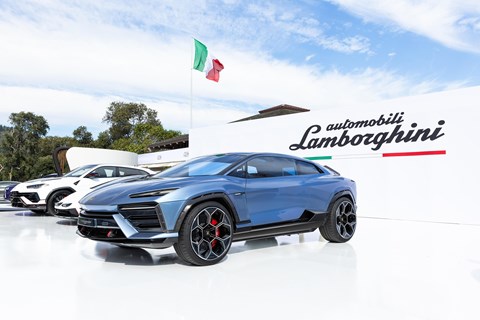
Why did you choose to do an electric crossover GT as the brand’s first EV?
‘We said we already have two supercars – the Lamborghini Temerario and Revuelto – which are not overlapping, and we have an SUV, the Urus, which is a totally different car.
‘So we looked at the idea to make a GT car, which is what we chose at the end of the day. But we also looked at another SUV, which we rejected, and a limousine, which we had already considered with the Estoque back in 2008 [below]. It was a concept which we had to develop further – it had a long wheelbase and we concluded that a long wheelbase does not always look that good.
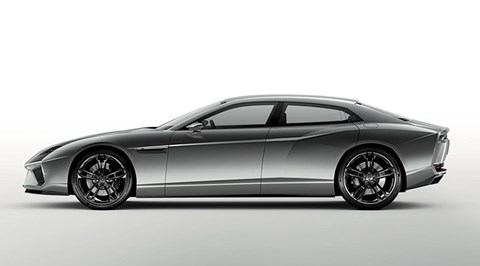
‘More and more these days, if you are going to do a limo, it’s about a long wheelbase and it’s not aimed at Europe, it’s more for Asia and North America. And a third supercar was not an option. We were very keen not to put too much cannibalisation between the cars.’
How hard was it to build the business case for a fourth model range?
‘It’s clear we have to find synergies between the two supercars and the more daily useable cars. Ferruccio Lamborghini back in the beginning of the 1960s started with GT cars, don’t forget: the 350 GT, the 400 GT, the Espada, all of these cars had front engines. In terms of the bodystyle, we said we must get the best out of both worlds – a GT car, a 2+2, with two doors, but with more ground clearance. Because this is something which our development research over the past decade showed us that more and more people want to sit high up, because if you have a daily user, it’s much more comfortable, you feel safer and this in combination with a platform where you can create synergies… well, for us that was the winning idea.’
So on the Urus and Lanzador we can expect synergies in the engineering?
‘Yes.’
And in time, when the third-generation Urus comes along next decade, we are looking at all-electric?
‘Yes, after Lanzador.’
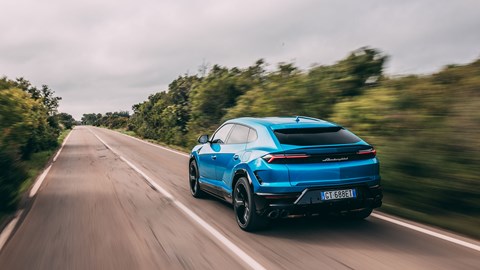
So the new Urus SE is a stepping stone towards that… Is that what the name refers to?
‘We just call it the Lamborghini Urus SE. That stands for Super Electric!’
What has the Urus done for Lamborghini? According to your own data, 41% of customers are under 40 years old, nearly a third of them are women. Are they family buyers? Do they have young children?
‘The demographics show that the oldest customers of the Urus are the Europeans, followed by the Americans and the youngest ones are from Asia. Our Asian clients are usually single or young couples. The Urus buyer does tend to be a family person, we don’t have many single people buying these. How do we know this? Because we always meet our customers at events – they talk about their kids and how they are influenced to buy this type of car.’
The past four years since Covid have been so turbulent – and yet Lamborghini is doing brilliantly well in profits and production records. Have you got the business into a resilient place, where you can ride out wars in Europe and the Middle East?
‘We can’t be much better positioned, in my opinion. The choices we’ve made in terms of design, the types of performance car we offer and how we put them together are all working. It’s on us to protect our volumes, our distribution, the proposition of our brand. Ultimately we are selling dreams and we have to go the extra mile to get this technological innovation into the cars, because we must exceed the expectations of our customers.
‘We are not selling basic mobility. This is the famous Yolo effect: You Only Live Once. It runs counter to war, the geopolitical situation in general and problems in the supply chain. Of course these affect our customers. We understand that markets can plateau and we have to deal with it. We cannot think the sky is the limit every day. It’s partly why for us customers are part of a club – owning one of our cars is only the first step in Lamborghini ownership. Engaging customers is paramount for the success of tomorrow. They have to feel embraced, they have to feel that they are in a community. This is really strong in the UK: you are our third biggest market, don’t forget…’
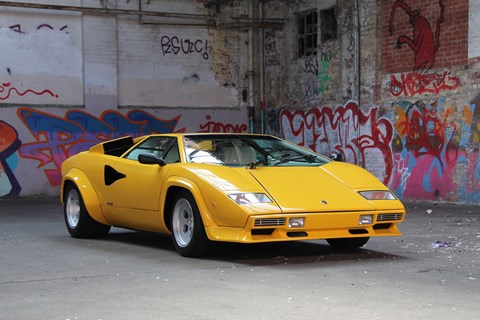
And what do these new products mean to the essence of Lamborghini? The company that brought us the Countach and Diablo is now preparing to launch a silent EV. How do you bring your customers along with you as you transform into an electrified brand?
‘Supercars are about design and performance. What we have to achieve in the design is pretty easy in a sense. If I look at our cars in comparison with the other luxury exclusive or super sports car manufacturers, we are very sharply positioned and very recognisable – even though the car is completely different, usually you don’t have a problem in recognising a Lamborghini. This cannot be anything else but a Lamborghini, you know.
‘But when we speak about performance, it’s different, because performance in Lamborghini can be divided into two types. One is about raw numbers: the track laptimes, braking distances from 100-0kph and so on. This is the engineers’ job – but they also have another task, which is the emotional side of driving. How you feel about the car, how it reacts. This is very different if you drive a Lambo. This is the biggest challenge we have when it comes to electrification.
‘I think we are dealing with this quite well with our hybrids – they’re reassuring in a way, because it’s underlining the performance. They’re fun to drive, but CO2 emissions are reduced at the same time. We underline the performance to our customers, yet we are reducing CO2 emissions big time because otherwise we cannot sell our cars anymore. So the biggest challenge for us is to take across this emotion from the hybrids to the full electric world. There are good opportunities with software, but the only thing which is missing, which we will never replicate, is the sound.’
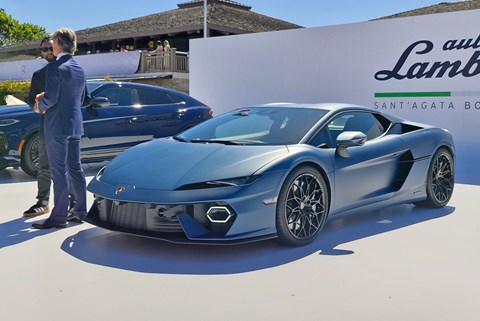
With the new Revuelto and Temerario supercars and Urus SE SUV, you’ve surely got the youngest range of cars in Lamborghini’s history…
‘The Urus is a facelift, but yes, it is a completely new line-up for us. This was a big effort for the entire team in the past four years – it was a slog, we were running flat-out. It was not easy to accomplish.’
What was the investment from the Volkswagen Group to launch these three cars?
‘We cannot talk about the size of the investment, unfortunately. It’s not a Lamborghini policy, it’s a group rule.’
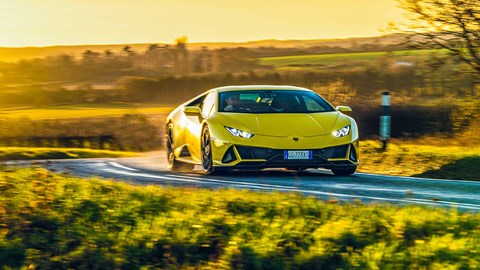
I was lucky enough to run a Lamborghini Huracan as an everyday car for nearly half a year as a CAR magazine long-term test [above]. Do many of your customers drive their supercars every day?
‘They are daily drivers, absolutely. The average mileage for an Urus customer is around 10,000-11,000km a year (6200-6800 miles), but for the super-sports cars, it is 5000-6000km (3000-3700 miles) annually. Our customers have a lot of cars in their garage – typically five or more.’
You say the Lanzador will be ready late this decade or early next. How will you know when to launch it?
‘We’re working on it. We have a lot of things which we want to accomplish with the fourth model range, so we have to look carefully about when to launch it and how, because it’s our first electric car and it has to be a hit.
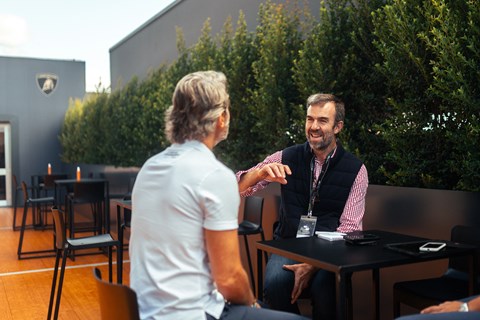
‘The decision of when to launch is a combination of the decisions which are coming up in the next couple of years around legislation. We have to consider if authorities will dilute regulations or not, what will happen to the acceptance of BEVs in society and so on. But the strategy is very clear. We want to go BEV [a pure battery electric vehicle] with this fourth model.’
How have customers reacted to the Lanzador concept?
‘We showed the car at Pebble Beach for its world premiere. It was pretty positive. Some people say, “Ah, please put an engine in it!” but the majority of our customer base understand why we are making it electric and they say if anyone can pull it off, it’s Lamborghini.’
It dovetails neatly with the recent Lamborghini Sterrato… you’ve taken the company into interesting places in recent years. It reminds me of the LM002 from the 1980s – you’ve a long history of surprising us…
‘It’s important to underline that we are not only a super-sports car company. We can do much more. The Sterrato [below] was an exercise which I was pushing to make happen, because I was sure it would be a a huge success. It was a great way to see out the Huracan at the end of its production run. This is what Lamborghini is good at doing.’
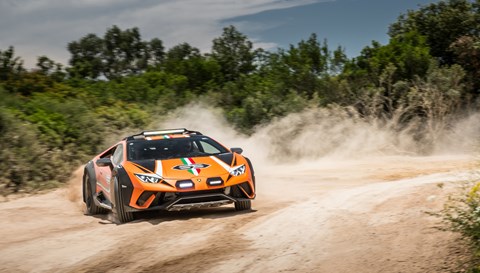
So you’re taking Lamborghini off road and in new directions, rather like sister brand Porsche. Is it a truly malleable brand? It’s not just about crazy fast cars?
‘Top speed in my opinion and acceleration have become a commodity. In the past, there were turbo cars or big-engine cars which were faster than us in acceleration and top speed runs – but they never affected our sales, because our DNA is not just about that. It’s about the feeling, the design and the handling behaviour of the car, not just the outright numbers.’
This is your second stint at Lamborghini. Do you feel emboldened, because you’ve been here before? Do you have a fresh sense of urgency this time round?
‘I do have a big sense of urgency. For a manufacturer like Lamborghini we are in a phase of our development where it is of the utmost importance to do the right thing. It is not an evolution anymore. It’s not about more power or bigger engines. No. It’s our job to make sure Lamborghini will be acceptable in the next decade. It’s a really important transition phase.’
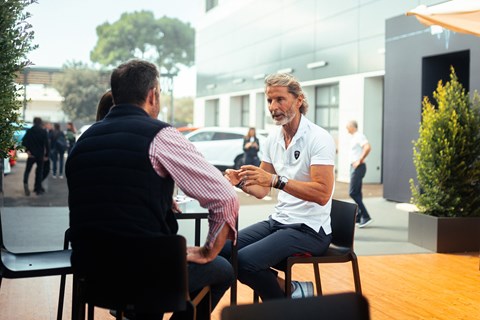
Is this the hardest task of your professional life?
‘In a way, yes. But it’s a very positive challenge.’
What have you learned over your time as a leader in the automotive industry?
‘You should not decide too quickly about the things which are going to happen in your business, because it’s in constant flux and you have to give your people some freedom. You also have to take care of your team and you have to invest in technology. You must look forward, but you also have to build up a team which follows you. You cannot just put them in a corridor and look in one direction. Decisions and belief have to come out of the team. They have to want the same thing. I’ve learned this over the years.’